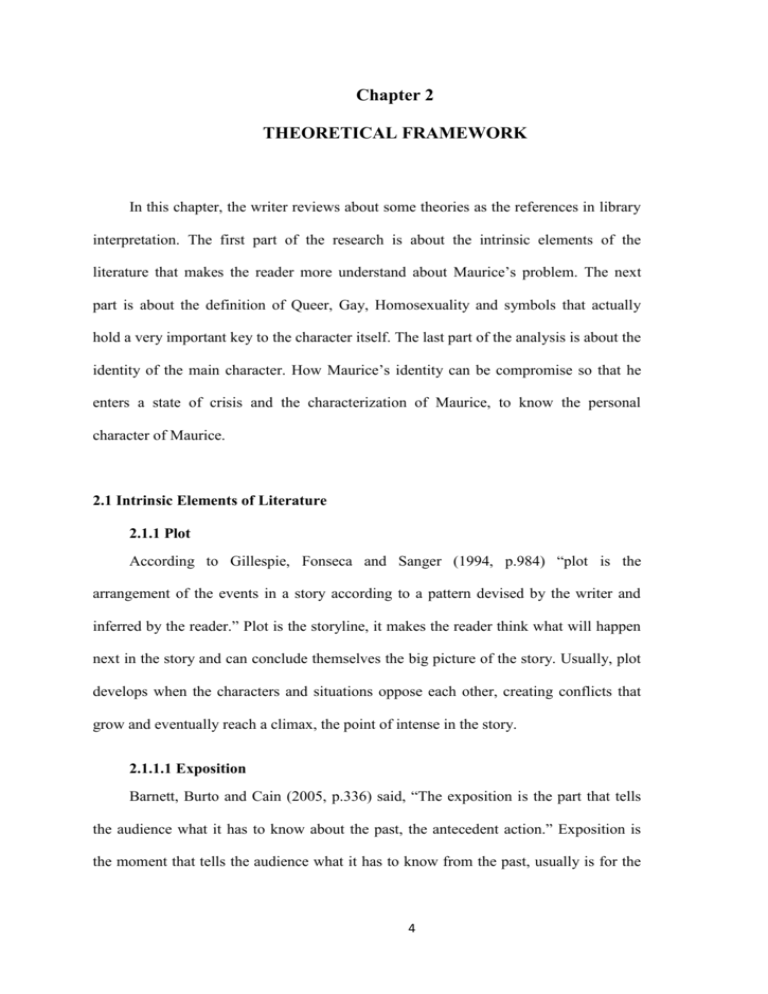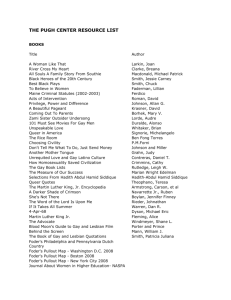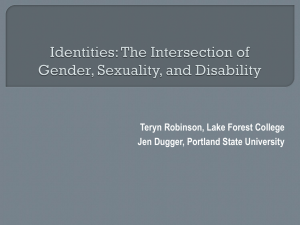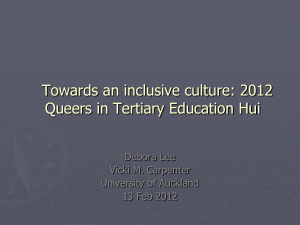
Chapter 2
THEORETICAL FRAMEWORK
In this chapter, the writer reviews about some theories as the references in library
interpretation. The first part of the research is about the intrinsic elements of the
literature that makes the reader more understand about Maurice’s problem. The next
part is about the definition of Queer, Gay, Homosexuality and symbols that actually
hold a very important key to the character itself. The last part of the analysis is about the
identity of the main character. How Maurice’s identity can be compromise so that he
enters a state of crisis and the characterization of Maurice, to know the personal
character of Maurice.
2.1 Intrinsic Elements of Literature
2.1.1 Plot
According to Gillespie, Fonseca and Sanger (1994, p.984) “plot is the
arrangement of the events in a story according to a pattern devised by the writer and
inferred by the reader.” Plot is the storyline, it makes the reader think what will happen
next in the story and can conclude themselves the big picture of the story. Usually, plot
develops when the characters and situations oppose each other, creating conflicts that
grow and eventually reach a climax, the point of intense in the story.
2.1.1.1 Exposition
Barnett, Burto and Cain (2005, p.336) said, “The exposition is the part that tells
the audience what it has to know about the past, the antecedent action.” Exposition is
the moment that tells the audience what it has to know from the past, usually is for the
4
5
main character that has a connection to his/her past. It is divided into three important
parts, there are character, setting and basic conflict.
2.1.1.2 Conflict
In conflict, there is struggle between the main point of the story and a different
side of the story (Flanagan, 2010). Usually it is a negative one. It means that, there will
be a part of the story which the actor or the actresses will feel very down because of the
heavy pressure, and they will try to put an end to it no matter what.
2.1.1.3 Climax
Bokesch (2003) said that the climax is the result of crisis. In climax, the result of
tension that has been added when the conflict begin, it is become more and more rising.
It is likely to be the vital moment of story, because of the main tension for a whole
story, could happen in climax.
2.1.1.4 Resolution
Barnet, Burto and Cain (2005, p.337) said that resolution is where the conflict is
resolved (the resolution of the story may have either positive or negative outcomes),
means that when the basic conflict has become more complicated until it reach a climax,
it get a completion result, whether it is good or bad.
2.1.2 Theme
Gillespie, Fonseca and Sanger (1994, p.986) defines theme as the central or
dominant idea of the story reinforced by the interaction devices such as character, plot,
setting and point of view, means that theme has an important part of the story, which is
support and put through the story so it become more clear.
6
2.1.3 Character
The character in literature is more usual level than other literary elements. Its
function is to be a movement of a story in literature, for a reader, with a fictitious
character, sometimes comparing the characters values, ideals, actions, goals, appearance
and personality. A character may change as a result of the experience he or she went
throughout the story.
Kennedy (2005, p.45) presumes that a character is presumably an imagined who
inhabits a story. But sometimes, it can be identified to the main character of a story,
human being personalities that become familiar to us. If the story seems true to life, we
generally find that its character act in a reasonably consistent manner, and that the
author has provided them with motivation: pretty enough reason to behave as they do.
In addition, there are many types of character that hold on important role of the
story, there are major and minor character, static and dynamic character.
2.1.3.1 Major and Minor Character
An important figure which is becomes the center of the theme or the
story itself. Mostly, neither major character nor minor character dominates in
story. Major character sometimes referred to the protagonist who has conflict
with the character who later become the antagonist and created conflicts of the
story (Soles, 2009, p.75)
In the story of Maurice, the main character who has struggle with gay
behavior is Maurice. He is the protagonist of the story and he is the center of
the story. Maurice is the character who created the conflict which is happen in
his life, and also triggered another struggling to two other characters in the
movie, there are Clive Durham and Alec Scudder.
7
There is also found a character known as the minor character. Minor
character sometime does not experience a development from the beginning of
the story, but its appearance may be vital to the main character, to make the
story more ‘mysterious’.
2.1.3.1.1 Static (Flat Character)
Soles (2009, p.67) said that a static character also known as the flat
character, is the one is offered the chance for positive change but who, for one
reason or another, fails to embrace it. Sometimes, the character is not brave
enough to evolve. He or she might be innocent and not aware of there is a need
to evolve. The character might be had too much pride, in their side, to evolve,
in which might be difficult for him or her, even though while it might become
an advantage to the other character.
2.1.3.1.2 Dynamic (Round Character)
According to Soles (2009, p.65), sometimes a dynamic character referred
to as round character, is one whose values, attitudes, and or ideals change as a
result of the experience the character undergoes throughout the story. Major
character in fiction is usually a round character and can make the audience
either engrossed or fascinated.
8
2.2 Queer Theory
Queer is somewhat a lifestyle in nowadays life. Being a queer, does not mean that
the person is totally different from the other people. In queer, there are two other
studies, gay and lesbian. The definition of queer according to Annamarie Jagose:
Once the term 'queer' was, at best, slang for homosexual,
at worst, a term of homophobic abuse. In recent years 'queer'
has come to be used differently, sometimes as an umbrella
term for a coalition of culturally marginal sexual selfidentifications and at other times to describe a nascent
theoretical model which has developed out of more
traditional lesbian and gay studies. (Jagose, Queer Theory,
University of Melbourne Press, 1996)
From the theory above, it can be classified that queer is a slang word for
homosexual, means that it’s a homophobic abuse, and no different than a divergence of
personality.
In queer theory, there are still unknown to understand, is it for men or women,
because queer theory is a theory that exists to any resistance, in gay or lesbian. For this
queer theory, there are boundaries that more inclusively than the lesbian and gay
movement, this theory includes anyone, especially non-heterosexual and tradespeople,
who reject heteronormative concepts of sex/gender and sexuality.
Lesbian, gay, bisexual and transgender is a group that has different needs and
represents their own positions in our culture. Although they are differ in the presence of
the social ladder, but they also have characteristics that should be valued as in the
categories of race, ethnicity, and class lines.
Communities within queer movements have been increasing rapidly and the urge
to fight it has been weakened. This community is accompanied by concepts of
differences, which means the difference has been strong by the turn of the
postmodernist and post-structuralism. (Kirsch, 2000, p. 115)
9
Many critics working with gender and queer theory are interested in the
breakdown of binaries such as male and female, the in-betweens do not exists. For
example, gender studies and queer theory maintains that cultural definitions of sexuality
and what it means to be male and female are in flux:
“... the distinction between “masculine” and “feminine”
activities and behavior is constantly changing, so that
women who wear baseball caps and fatigues...can be
perceived as more piquantly sexy by some heterosexual men
than those women who wear white frocks and gloves and
look down demurely” (Richter 1437).
In 1990’s, according to Selden (2005, p. 253), ‘Queer Theory’ designated a
radical rethinking of the relationship between subjectivity, sexuality, and representation.
Queer theory‘s foregrounding of a politics of difference and marginality, said
Selden, has assisted gay and lesbian critiques of heterosexual hegemony and patriarchy
while the development of a postmodern aesthetic has helped inspire the expression of
sexual plurality and gender ambivalence in the area of cultural production: a dynamic
dialogue which has placed lesbian and gay theories at the forefront of work in the
increasingly cross-disciplinary field of critical theory (2005, p. 253).
Teresa de Lauretis, in the Introduction to the ‘Queer Theory’ issue of differences
journal(1991), traced the emergence of the term ‘queer’ and described the impact of
postmodernism on lesbian and gay theorizing.
In Joseph Bristow’s view in 1992, ‘lesbian and gay criticism does not comprise a
coherent field, but this, he argued was ‘its strength’ (Selden, 2005, p.252). In this
statement it can be assume that Bristow’s point of view of lesbian and gay criticism is
not according to the environment, while its individual has its own power to manage the
recognition.
10
In consequence, said Selden, queer theory is mobile and varied in its assault upon
privileged, stable, heterosexual ‘origins’. While some, also from Selden, in a mood of
holiday fun, seek to celebrate the carnival of style, artifice, performance, and play
discovered in preserve sexualities, others seek more politicized stance, moving beyond
Foucault or adopting a more materialist response to poststructuralist textualism.(2005,
p.258).
Queer is indeed still unknown for man or woman, how masculine that woman can
be or how feminine that a man can be. But the theory specified that it is to define that
whether a man is a gay or a woman is lesbian, it does not matter. They wants to have the
same acknowledge from people, so that they can live normally. Not being a
discriminative, they have the same rights for living in this society.
2.3 Gay Theory
According to Edgar and Sedwick (1990), In Kirch’s (2000), the question of
sexuality is the center of concern of queer, the sexuality should be understood first.
Weeks (1986, p.3) said that sexuality is the most natural part of human, it will identify
someone’s gender and personality and also it is basis for some of our most passionate
feelings and commitments.
Weeks (1986) adds that with sexuality, we experience ourselves as real people; it
gives us our identities, our sense of self, as men and women, as heterosexual and
homosexual, ‘normal’ or ‘abnormal’, ‘natural’ or ‘unnatural’ (p.3) .
11
A passage from Gertrude Stein's Miss Furr & Miss Skeene (1922) is possibly the
first traceable published use of the word to refer to a homosexual relationship.
According to Linda Wagner-Martin (Favored Strangers: Gertrude Stein and her
Family (1995)) the portrait, "featured the sly repetition of the word gay, used with
sexual intent for one of the first times in linguistic history," and Edmund Wilson (1951,
quoted by James Mellow in Charmed Circle, 1974) agreed:
They were...gay, they learned little things that are things in being
gay, ...they were quite regularly gay (Stein, 1992).
What Stein said about it, that gay is that the person will not realize that he is gay
because being like that is actually can be just practical, some people wants to be a gay
because they realized that they ARE gay, but some may not know a person is gay
because he doesn’t realize that he is gay. It is on his natural behavior, and it is hard to
change it when it is already happen.
Two main influences on gay theory have been Sigmund Freud and Michael
Foucault. Already in the nineteenth and early twentieth century, detailed psychological
case-studies appeared to complicate and infinitely expand the range of sexuality.
Psychoanalytic theory therefore appeared to promise a new plurality of possible
classifications. But in certain respects Freud’s work proved to have a strictly normative
effect in that of his believers, whose goal appeared to be to return the patient to an
integrated, healthy state, purged of the disorienting ‘illness’ of homosexuality (Selden,
2005, p. 244).
According to Selden (2005), the diversity of gay and bisexual research since the
1970’s reflects the efforts to reclaim literary texts, cultural phenomena and historical
narratives which had remained hidden from critical attention. At the same time, there
12
has been an explosion in the diversity of strategies for exploiting these materials.
D’ Augelli and Patterson (2001) assume that there are three kinds of common
sexuality, which are homosexuality, heterosexuality and bisexuality:
Homosexuality is a sexual attraction to
someone of the same anatomical sex;
heterosexuality is a sexual attraction to someone
of the opposite sex. Closely allied to sexual
attraction is fantasy. If someone has sexual
fantasies about others of the same sex, then
the fantasies are homosexual; if someone has
sexual fantasies about others of the opposite sex,
then the fantasies are heterosexual. If a person’s
sexual attractions and fantasies are primarily
homosexual, then that person maybe labeled
“lesbian” or “gay”. Conversely, if a person’s
sexual attractions and fantasies are primarily
heterosexual, then the person may be labeled
“heterosexual”. When attraction and fantasy are
directed to members of both sexes, a person may
be labeled “bisexual”. (2001, p.27)
Being a gay man is “not something that the gay man had himself chosen”
(Appiah, 2005, p.86). This kind of sexual orientation is not something that someone can
choose for his/her life and there is no one can control this ‘natural attractions”.
From all those theories given above, it explains that homosexual, especially gay
are facing a lot of identity problems as they are trying to live with their condition. The
internal problems are clearly come from the inside.
According to D’Augelli and Patterson (2001, p.272), homosexuals have to deal
with problems when they are revealing themselves as gay: Homosexuality is a disease,
madness. So that people do not want to make friends with them. Second one is that
homosexuality is a gender inversion. People intend to believe that other than
heterosexuals is that a serious problem in the sexual self. Number three is that
13
homosexuality is self-hatred. Other may see that homosexuals are just, but this is shows
that they want to believe what they believe. And the last one is that homosexuality is deindividuation and giving up the personal self. Other people may see that homosexuals
are giving up their identity for being that way, but truth is not always like that.
Those statements makes homosexual have sexual afraid of revealing their true
identities. This is what makes homosexual afraid of imposing their true identity.
Because of it, there is a term called homophobia. Homophobia is a fear of showing their
true sexual identity and also fear of someone that is afraid of a gay or in other word,
they hate gay people.
So, gay is not a disease that it should be avoided or eradicated. Gay is a lifestyle
for some male who wants to search their happiness. It is not that we should avoid it, but
we have to keep them, and love them just like we love anyone else. Because God
created man and women differently, they are not all, the same. It must be some things
that differentiate them each other.
2.4 Identity Stages
Identity is a term to describe one’s personality and expression of their individual
or groups, such as national identity and cultural identity. The term comes from the
French words identité, which also the origins come from Latin noun identitas, -tatis,
itself the derivation of the Latin adjective meaning “the same”. The term is thus
essentially comparative in nature, as it emphasizes the sharing of a degree of sameness
or oneness with others in a particular area or on a given point.
A psychological relates to self-image, self-esteem, and individuality, which
Weinreich (1986) gives the definition about it:
14
A person's identity is defined as the totality of one's selfconstrual, in which how one construes oneself in the present
expresses the continuity between how one construes oneself
as one was in the past and how one construes oneself as one
aspires to be in the future; this allows for definitions of
aspects of identity, such as: One’s ethnic identity is defined
as that part of the totality of one’s self-construal made up of
those dimensions that express the continuity between one’s
construal of past ancestry and one’s future aspirations in
relation to ethnicity (Weinreich,1986a).
An identity, for some people, is a personal matter. Because it can value
themselves to the other people, so that this person can be said has a strong personality.
For example a police officer: His identity is a police officer, of course he must have
helped many people from trouble. His strong experience makes it believes, that his
identity, is a good person.
Appiah (2005) describes how a person can behave differently from another person
in showing their identity:
In constructing an identity, one draws, among other
things, on the kinds of a person available in one’s society. Of
course, there is not just one way that gay or straight people
or blacks or whites or men or women are to behave, but
there are ideas around (contested, many of them, but all
sides in these contest shape our options) about how gay,
straight, black, white, male, or female people ought to
conduct themselves. (2005, p.39)
Based on those opinions and theories, the characterizations of gay people are not
the same as the heterosexual orientations. To achieve an identity, one must get involved
in a community to have an acknowledgement, at least from the community, to have the
confidence that needed to do things.
Kirsch (2000, p.122) agrees that communities exists because of the different needs
from the complexity of society. He believes that social change starts to develop in
communities. Moreover, Kirsch notes “Social and emotional health are promoted by
15
active participation with other in community. The community is where ‘safe space’ is
created”. People who are queer seemed to get unfair treatment from the society and the
sexual identity is getting more concern in modern societies as following:
With sexuality and sexual identity being regarded, in a
modern societies, as so central to self-identity, issues in this
area take on a profound level of importance. The question of
one’s sexual orientation, for instance, is of much more
fundamental concern to us than taste in music or preference
for certain kinds of food. (Gauntlett, 2002, p.256)
As the time changes, people are changing and they are starting over to build a new
identities for themselves. This statement is supported by Gauntlett (2002, p.256),
“people are changing, building new identities founded not on the certainties of the past,
but organized around the new order of modern living, where the meanings of gender,
sexuality and identity are increasingly open.” People can change and the environment
could be the reasons of that change.
Vivienne Cass (1979) has developed a sexual identity development named ‘The
Cass Identity Model’ which is written in a journal by Nam Cam Trau and Hartel, 2004.
Cass describes that sexual identity have six stages: identity confusion, identity
comparison, identity tolerance, identity acceptance, identity pride, and identity
synthesis.
The first stage, according to Cass (1979), is identity confusion. It is a stage when a
person gets confused with his/her own identity. The second stage is identity comparison,
this stage means that he/she has to deal with any negative emotions from other people.
The next stage is identity tolerance, this stage means that the person that have sexual
identity orientation has a possibility that his/her existence could be tolerated but not
accepting it. The fourth stage is identity acceptance, where there is one accept his newly
16
found identity but does not let the outside world accept him. The fifth stage is identity
pride, where the one accepted his identity, he take his fate with bravery and hold his
identity with a strong mind. The last stage is identity synthesis, this stage which is a
combination of identities.
The stages of identity are important because there are steps to acknowledge to
their own identities so that in the future, people can respect homosexuals because
people, homosexuals or heterosexuals, are just a single person. In their own personal
life, they need someone or group of people to accompany them and helped each other
for living. People can’t live alone, and so does homosexuals. They need their own
safety, just like any other people who wants safety in their life.









